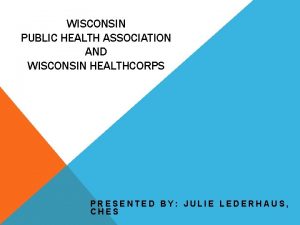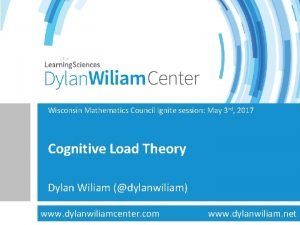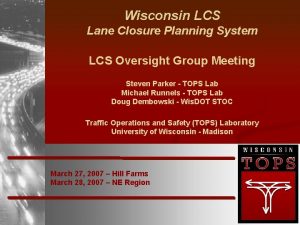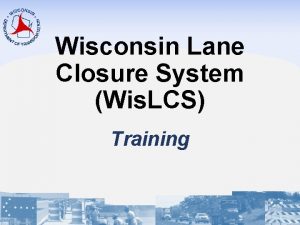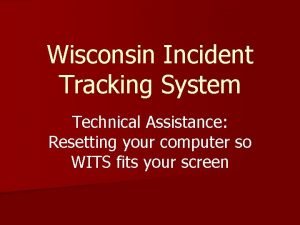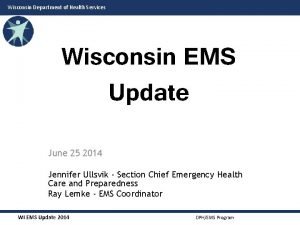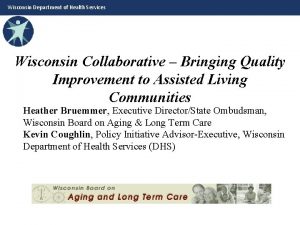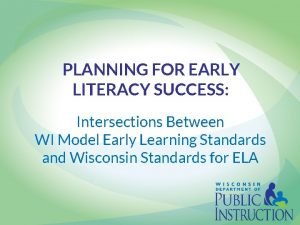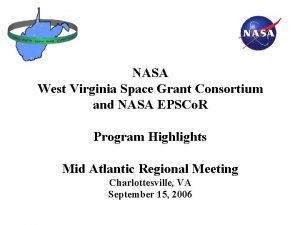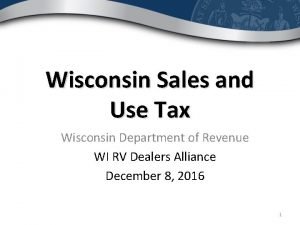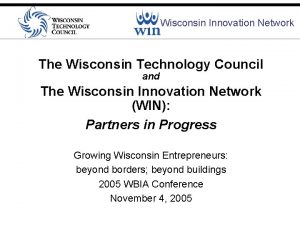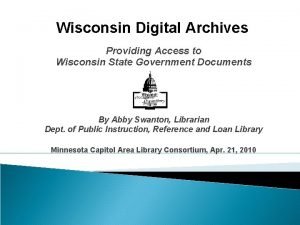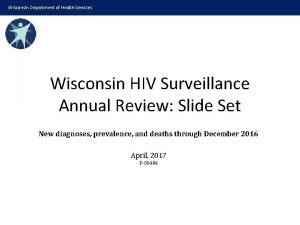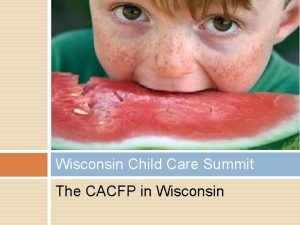Wisconsin Literacy K 12 literacy data and other


















- Slides: 18

Wisconsin Literacy K‐ 12 literacy data and other resources Matt Cooper Borkenhagen Liz Fitzpatrick

About me

Why are we talking about K‐ 12 literacy data? • WL member organizations need data for various purposes • Knowledge of community • Reporting to stakeholders • Communication to funders • We sought support from the Department of Public Instruction • Put together data • Packaged it in an online interactive tool for you • Along with other resources

Why is it so hard to find literacy data? • Few studies are conducted with large scope • Those that exist use methods that aren’t direct (NAAL; Baer, 2009) • Leaves local literacy orgs in the blind about actual literacy levels • Agencies that collect large data samples aren’t at a level useful to WL • For example, census • Leaves us few options for viable sources of information

The solution • Literacy development is…developmental • We can look to data on youth literacy performance • Connection between youth literacy and downstream outcomes (Baydar et al. , 1993; NRP, 2000; Seidenberg, 2017) • Data accessible through Department of Public Instruction • We’ve curated some relevant data (the topic of today’s webinar) • Existing publicly available resources (more on that later)

Where to access the application



A few basics of the interactive tool • You select the county (in the “County” field) • You select the variable (in the “Variable” field) • this selects the variable (type of data) you want to see • When you select a county-variable pair, a graph will be shown • Two years will appear automatically (2015 -16 and 2016 -17) • A description will appear automatically

county

variable

graph and explanation will appear

Let’s go to the application You can also find it here

Additional resources • Wisconsin DPI has a good deal more data • Their platform is called WISEdash • Their portal: dpi. wi. gov/wisedash • Opportunity Atlas • See: opportunityatlas. org • Income, housing data by region and demographic

Articles • Wisconsin State Journal article "Less than half of Wisconsin students in grades 3 -8 proficient or better in English, math" (includes interactive district data chart) • Journal Sentinel article “Fewer than half of Wisconsin students are proficient in math and reading, new test scores show”


Thank you! Contact: cooperborken@wisc. edu (Matt) liz@wisconsinliteracy. org (Liz)

References Baer, J. , Kutner, M. , Sabatini, J. , & White, S. (2009). Basic Reading Skills and the Literacy of America's Least Literate Adults: Results from the 2003 National Assessment of Adult Literacy (NAAL) Supplemental Studies. NCES 2009‐ 481. National Center for Education Statistics. Baydar, N. , Brooks‐Gunn, J. , & Furstenberg, F. (1993). Early warning signs of functional illiteracy: Predictors in childhood and adolescence. Child development, 64(3), 815‐ 829. National Reading Panel (US), National Institute of Child Health, & Human Development (US). (2000). Report of the National Reading Panel: Teaching children to read: An evidence-based assessment of the scientific research literature on reading and its implications for reading instruction: Reports of the subgroups. National Institute of Child Health and Human Development, National Institutes of Health. Seidenberg, M. (2017). Language at the speed of sight: How we read, why so many can’t, and what can be done about it. New York: Basic Books.
 Information and media literacy similarities
Information and media literacy similarities Venn diagram media and information literacy
Venn diagram media and information literacy Examples of people media
Examples of people media Cyber literacy and digital literacy
Cyber literacy and digital literacy Types of repair
Types of repair Wisconsin uniform plumbing code
Wisconsin uniform plumbing code Wi state lab of hygiene
Wi state lab of hygiene Wisconsin public health association
Wisconsin public health association Wisconsin math council
Wisconsin math council Institutional medicaid
Institutional medicaid Lane closure system
Lane closure system Lane closure system
Lane closure system Wisconsin incident tracking system
Wisconsin incident tracking system Wisconsin in scotland
Wisconsin in scotland Wi dhs ems
Wi dhs ems Heather bruemmer wisconsin
Heather bruemmer wisconsin Wisconsin space grant consortium
Wisconsin space grant consortium Wisconsin model early learning standards
Wisconsin model early learning standards Wisconsin space grant consortium
Wisconsin space grant consortium







